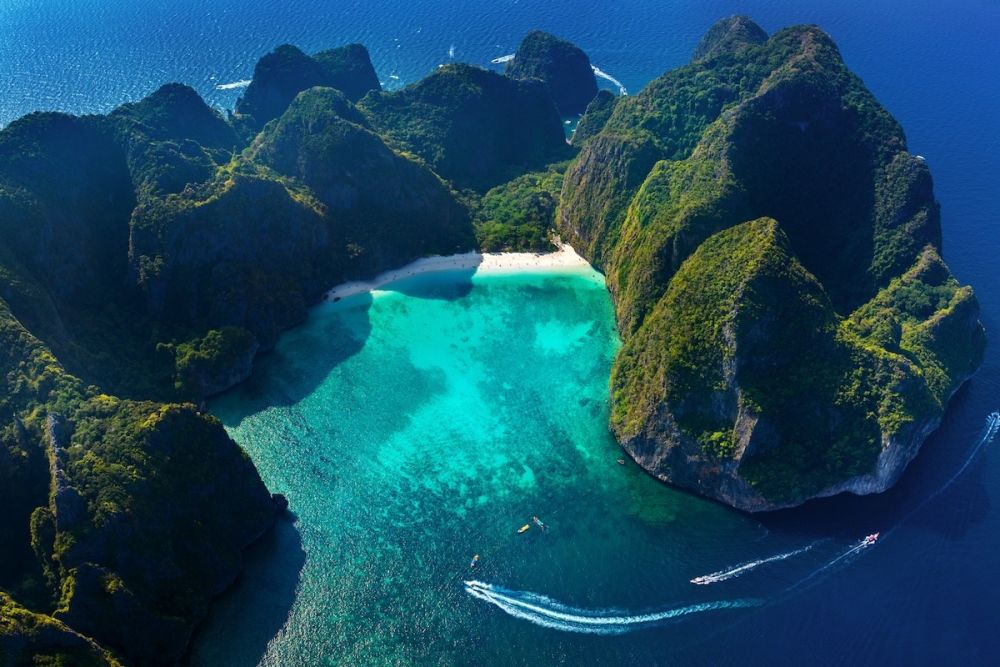

The Phi Phi Islands have long been a gem of Thailand's Andaman Sea, attracting travelers with their natural beauty and vibrant atmosphere. The archipelago consists of six islands, with Phi Phi Don and Phi Phi Leh being the most prominent. The history of tourism here is intrinsically linked to the stunning landscapes, crystal-clear waters, and the fame garnered from the silver screen.
Tourism in the Phi Phi Islands was relatively modest before the 1980s. These hidden islands were known only to adventurous backpackers and seafarers. The local sea gypsy population and small communities of fishermen were the primary residents. Simple bungalows and camping sites were the main accommodations available for those few who knew of the islands' existence.
During the late 1980s and 1990s, Phi Phi's tourism began to blossom. The word about this paradise spread through traveler's tales, diving enthusiasts, and guidebooks. More structured accommodation and amenities started to emerge as the influx of tourists steadily increased. With Thailand's booming economy and development in the travel industry, Phi Phi's visibility on the world stage grew.
In 2000, the movie "The Beach," starring Leonardo DiCaprio, was filmed on the pristine shores of Maya Bay on Phi Phi Leh Island. This moment dramatically accelerated the global interest in the islands. Maya Bay became a bucket-list destination, and its fame catapulted Phi Phi's popularity to unprecedented levels. Visitors from all around the world flocked to the islands to witness the idyllic landscapes they had seen on the big screen.
Tragedy struck in 2004 when a devastating tsunami hit the islands, causing destruction and loss of life. The event put a temporary halt to tourism as the world reeled from the news and the islands embarked on a path to recovery. The resilient spirit of the local community, coupled with international support, helped rebuild and restore Phi Phi to its former glory.
As tourist numbers continued to soar, concerns about the environmental impact became prevalent. Authorities took action by implementing conservation initiatives, such as temporary closures of Maya Bay, to allow for ecological recovery and to preserve the natural beauty that drew visitors to Phi Phi in the first place.
Today, Phi Phi's tourism landscape is defined by a mix of luxury resorts, mid-range accommodations, and remaining budget options, which continue to attract a diverse range of tourists. Sustainable and eco-friendly practices are becoming increasingly important, with a renewed focus on responsible tourism. Adventure activities such as scuba diving, rock climbing, and island-hopping remain popular, while wellness and cultural experiences gain traction.
Despite challenges, Phi Phi Islands remain a magnetic destination, with their appeal evolving alongside the needs and values of modern travelers. The commitment to preserving the natural and cultural integrity of Phi Phi ensures that it will continue to enchant visitors for generations to come.